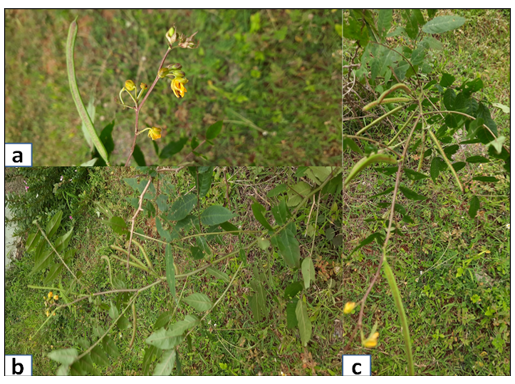- Printed Journal
- Indexed Journal
- Refereed Journal
- Peer Reviewed Journal

Journal of Pharmacognosy and Phytochemistry
Vol. 14, Issue 5 (2025)
Phytochemical diversity and pharmacological significance of Cassia occidentalis
MS Dhanushree and S Umesha
Cassia occidentalis is an annual or perennial medicinal plant used in several folklore medicines across the globe to treat various diseases. It is commonly known as coffee senna, stinking weed and Negro coffee belongs to the family of Caesalpiniaceae and found all over the world. The different plant parts are used to prepare medications for different ailments. Secondary metabolites such as alkaloids, flavonoids, tannins, saponins, sugars, cardiac glycosides, quinones, terpenoids, anthraquinones etc. are reported in this plant. A variety of phytochemicals including rhein, emodin, aloe emodin, chrysophenol, physcion, cassiollin, occidentol I, occidental II, methyl physcion, quercetin, questin, betacyanin, coumarins etc. have been isolated and reported from this plant. This weed has been known to possess antibacterial, antifungal, antidiabetic, antioxidant, anti-inflammatory, antipyretic, antitrypanosomal, anticonvolusant, hepatoprotective activities. This review provides a comprehensive overview of the morphological traits, global distribution, traditional medicinal uses, phytochemical profile, herbal formulations, notable patents, pharmacological activities, and toxicological aspects of Cassia occidentalis.

Fig. 1: Morphological features of Cassia occidentalis.
Pages: 339-347 | 513 Views 315 Downloads









